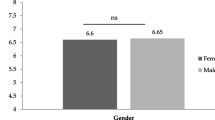Abstract
Objective
To determine, by surveying Australian community pharmacists, the perceived barriers to the provision of information about complementary and alternative medicines (CAMs) and suggestions for overcoming them.
Method
Anonymous, self-administered survey sent to a random sample of 701 pharmacists registered in three states of Australia in 2004.
Main outcome measure
Pharmacists’ perceived barriers to the provision of information about CAMs.
Results
A total of 344 questionnaires were returned by pharmacists (49% response) of which 211 (30%) were currently practising in community pharmacy. Ninety-five percent of surveyed community pharmacists indicated that they personally received enquires about CAMs, with fewer than 15% reporting they were “very confident” in answering queries about safety, interactions or benefits of CAMs. Frequently used CAM information sources were those from manufacturers and distributors, professional newsletters and journals and textbooks. Pharmacists’ perceived barriers to the provision of CAM information included a lack of suitable training (most training was informal), deficiencies in available information sources, a lack of managerial support, the need for regulatory changes, consumer beliefs about CAM safety and time constraints due to competing demands in daily practice. Pharmacists proposed improvements to overcome these barriers including improvements to training.
Conclusion
There is scope for pharmacy professional organisations and educational institutions to further support pharmacists in their practice through providing information on the best information sources available and training that meets the needs of undergraduate students, pharmacists and other pharmacy staff. There is a need to examine regulatory requirements concerning the provision of product information with CAMs in Australia and to implement mechanisms for increasing consumer awareness of regulatory procedures for these medicines.
Similar content being viewed by others
References
MacLennan A, Myers S, Taylor A. The continuing use of complementary and alternative medicine in South Australia: costs and beliefs in 2004. Med J Aust 2006;184:27–31.
Expert Committee on Complementary Medicines in the Health System. Complementary medicines in the Australian health system. Canberra: Commonwealth of Australia; 2003. ISBN 1 920746 18 8.
Australian Self Medication Industry. ASMI and complementary medicine – market distribution and access to complementary medicines; 2002. http://www.asmi.com.au/Complementary%20Medicine.htm (23 Jan 2006).
Australian Government Department of Health and Ageing Therapeutic Goods Administration. Medicines regulation and the TGA; 2004. http://www.tga.gov.au/docs/pdf/medregs.pdf (15 May 2006).
Barnes J, Abbot NC. Experiences with complementary remedies: a survey of community pharmacists. Pharm J 1999;263(7063):R37.
Dolder C, Lacro J, Dolder N, Gregory P. Pharmacists’ use of and beliefs about alternative medicines. Am J Health Syst Pharm 2003;60:1352–7.
Koh H, Teo H, Ng H. Pharmacists’ patterns of use, knowledge and attitudes toward complementary and alternative medicine. J Altern Complement Med 2003;9(1):51–63.
Hutchinson S, Mitchell K, Hansford D, Stewart D. Community pharmacists’ views and experiences of counter-prescribing in pregnancy Int J Pharm Pract 2001;9(1):15–21.
Brown C, Barner J, Shah S. Community pharmacists’ actions when patients use complementary and alternative therapies with medications. J Am Pharm Assoc (Wash DC) 2005;45:41–7.
Howard N, Tsourounis C, Kapusnik-Uner J. Dietary supplement survey of pharmacists: personal and professional practices. J Altern Complement Med 2001;7(6):667–80.
Naidu S, Wilkinson J, Simpson M. Attitudes of Australian pharmacists toward complementary and alternative medicines. Ann Pharmacother 2005;39:1456–61.
Dooley M, Lee DY-L, Marriott J. Practitioners’ sources of clinical information on complementary and alternative medicine in oncology. Support Care Cancer 2004;12:114–9.
Smith C, Martin K, Hotham E, Semple S, Bloustien G, Rao D. Naturopaths practice behaviour: provision and access to information on complementary and alternative medicines. BMC Complement Altern Med 2005;5:15. DOI: 10.1186/1472-6882-5-15.
Welna E, Hadsall R, Schommer J. Pharmacists’ personal use, professional practice behaviors and perceptions regarding herbal and other natural products. J Am Pharm Assoc 2003;43(5):602–12.
SPSS Inc. Statistical Package for the Social Sciences. Version 11.5.1. Chicago: SPSS Inc; 2002.
Moulds RFW. Drugs and poisons scheduling. Aust Prescr 1997; 20:12–3.
Sweet B, Gay W, Leady M, Stumpf J. Usefulness of herbal and dietary supplement references. Ann Pharmacother 2003;37:494–9.
Chambliss W, Hufford C, Flagg M, Glisson J. Assessment of the quality of reference books on botanical dietary supplements. J Am Pharm Assoc 2002;42(5):723–34.
Nathan J, Cicero L, Koumis T, Rosenberg JM, Feifer S, Maltz F. Availability of and attitudes toward resources on alternative medicine products in the community pharmacy setting. J Am Pharm Assoc (Wash DC) 2005;45(6):734–9.
MacLennan A, Wilson D, Taylor A. The escalating cost and prevalence of alternative medicine. Prev Med 2002;35:166–73.
Dutta A, Daftary M, Ayuk Egbe P, Kang H. State of CAM education in U.S. schools of pharmacy: results of a national survey. J Am Pharm Assoc 2003;43(1):81–3.
Shields K, McQueen C, Bryant P. Natural product education in schools of pharmacy in the United States. Am J Pharm Educ 2003;67(1):43–8.
Shah B, Siganga W, Mallya U, Shah S. Pharmacy student perspectives on classroom education about herbal supplements. Am J Pharm Educ 2005;69(5):1–6.
Australian Institute of Health and Welfare. Pharmacy labour force to 2001. Canberra: Australian Institute of Health and Welfare; 2003. ISBN 1 74024 256 4.
Acknowledgements
We thank the Pharmacy Boards of South Australia, Victoria and Queensland for their assistance in the mailing of questionnaires. This study was supported with funding from a University of South Australia Collaborative Grant.
Author information
Authors and Affiliations
Corresponding author
Rights and permissions
About this article
Cite this article
Semple, S.J., Hotham, E., Rao, D. et al. Community pharmacists in Australia: barriers to information provision on complementary and alternative medicines. Pharm World Sci 28, 366–373 (2006). https://doi.org/10.1007/s11096-006-9058-y
Received:
Accepted:
Published:
Issue Date:
DOI: https://doi.org/10.1007/s11096-006-9058-y




